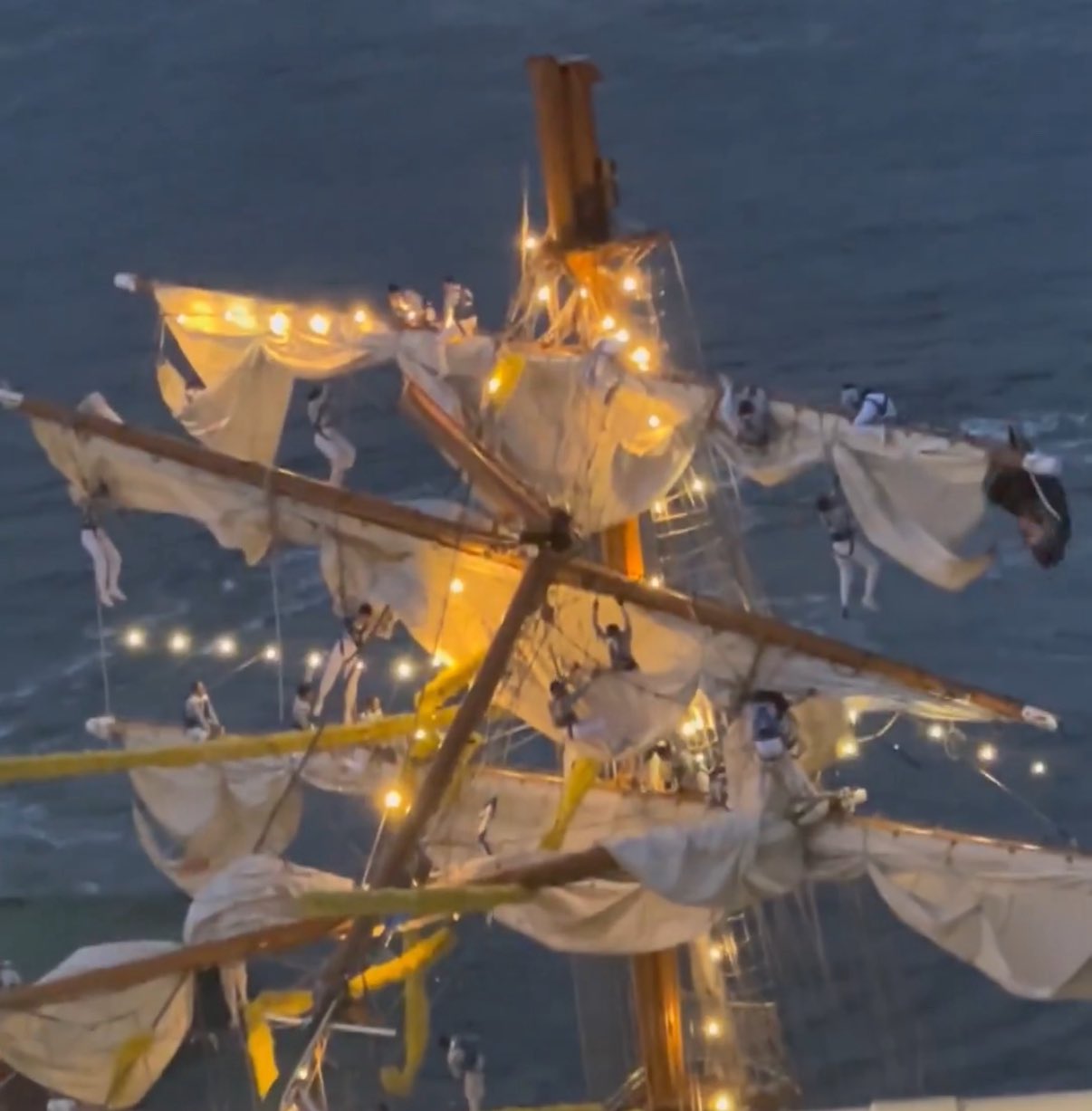A tragic maritime accident has captured global attention after the ARM Cuauhtémoc, a renowned Mexican Navy sail training vessel, collided with the Brooklyn Bridge, leaving two dead and over 20 injured.
The fatal crash has ignited growing concerns over maritime safety, infrastructure resilience, and the effectiveness of emergency response systems in urban waterways.
The ARM Cuauhtémoc, a tall ship standing 150 feet high and built in 1982, was sailing through the East River during a celebratory voyage with nearly 300 passengers on board when it suffered a reported mechanical malfunction. The vessel’s towering masts struck the underside of the Brooklyn Bridge, whose clearance is only 127 feet, causing a partial collapse of the masts and sending debris crashing onto the deck.
Eyewitness videos and social media footage quickly went viral, showing the horrifying moment the ship made contact with the bridge.
Video of Mexican Navy Ship Colliding with Brooklyn Bridge
Emergency crews responded swiftly, evacuating injured passengers to the Brooklyn Navy Yard before transferring the most critical cases to nearby hospitals. At least 22 people sustained injuries, with half of them reported in critical condition.
ALSO READ Breaking: House Democrat Pushes for Impeachment Vote on Trump — Party in Turmoil
This incident has sparked a critical conversation about the safety of tall ships in congested urban waterways. The historic Brooklyn Bridge, completed in 1883, remains one of New York City’s most iconic structures, but its limited navigational clearance poses risks for large sailing vessels like the Cuauhtémoc.
Experts point to parallels with the 2024 Baltimore bridge collapse, emphasizing that aging infrastructure and insufficient maritime coordination continue to threaten public safety. In the wake of this latest disaster, calls are growing louder for stricter pre-departure inspections, better communication with port authorities, and updated regulations to avoid similar tragedies.
New York City Mayor Eric Adams confirmed the fatalities and praised the swift response of emergency personnel, while Mexican President Claudia Sheinbaum extended heartfelt condolences to the families of the deceased and those injured.
Key search terms like ARM Cuauhtémoc, Brooklyn Bridge collision, maritime safety concerns, infrastructure resilience, and emergency response protocols highlight the broader implications of this accident. Officials and maritime safety experts alike are urging a comprehensive review of current guidelines for navigating urban waterways.
As investigations continue, major questions remain: How did a vessel whose height exceeded the bridge’s clearance proceed without proper rerouting or restrictions? What safeguards were overlooked? And what can be done to prevent another incident of this magnitude?
This devastating collision stands as a stark warning for urban planners, coast guards, and international maritime authorities. It underscores the urgent need for updated safety protocols, real-time vessel tracking, and infrastructure assessments to protect both seafarers and city residents.
In conclusion, the ARM Cuauhtémoc’s crash into the Brooklyn Bridge on May 17, 2025, is not just a tragic accident—it’s a wake-up call. Strengthening maritime safety regulations and reinforcing infrastructure resilience must now become a top priority to prevent future disasters on our waterways.

